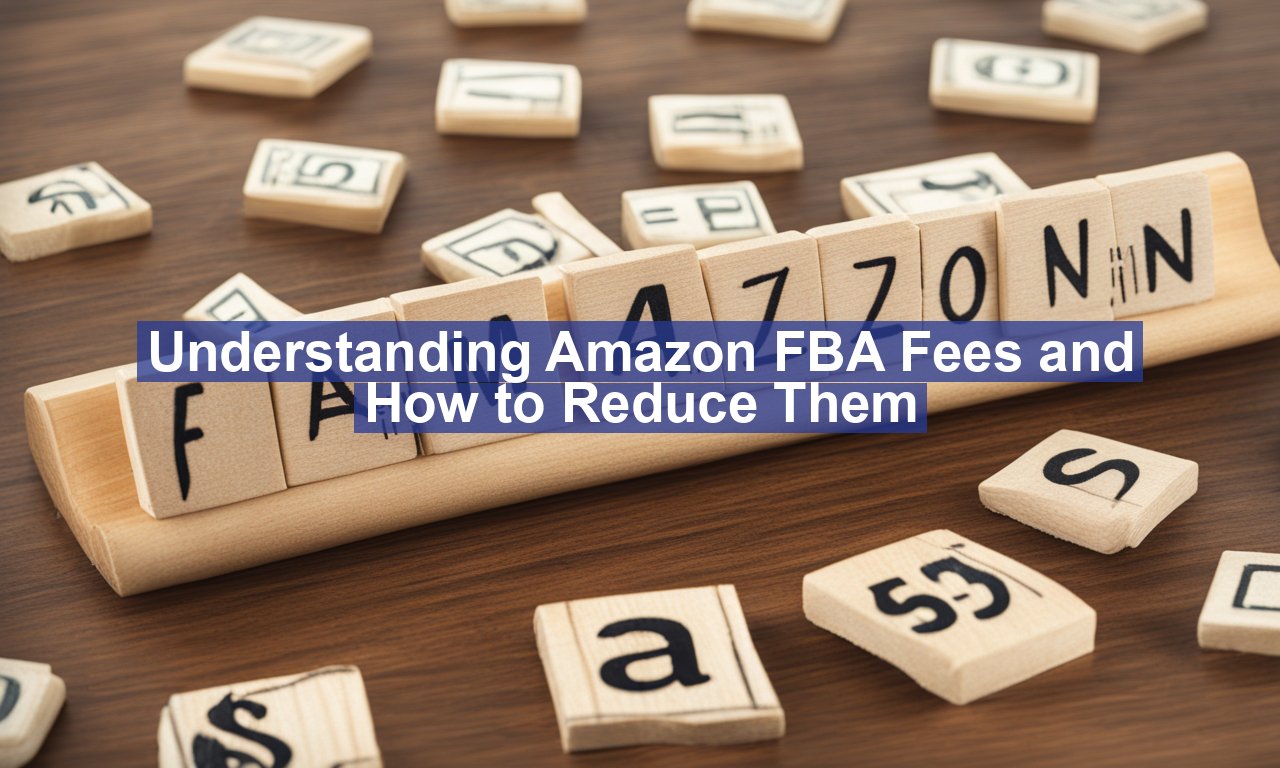Understanding Amazon FBA fees and how to reduce them, Are you an Amazon seller looking to maximize your profits but feel overwhelmed by the plethora of fees associated with Fulfillment by Amazon (FBA)? Navigating this complex landscape of fees is crucial to maintaining the necessary balance between profit and expenses. Understanding Amazon FBA fees and how to reduce them and efficiently manage Amazon FBA fees can spell the difference between thriving in the marketplace or watching your profits dwindle away.
In this comprehensive guide, we will delve into the various types of FBA fees, why they matter, and most importantly, how you can reduce these costs to boost your bottom line.
Understanding Amazon FBA Fees and How to Reduce Them Step-by-Step Guide
Breaking Down Amazon FBA Fees
Amazon FBA simplifies the selling process, but it’s not free. Knowing the different types of fees and how they apply to your business is the first step towards optimization.
- Fulfillment Fees
These are fees you pay every time an item is sold and shipped. They cover storage, picking, packing, and shipping the product to the customer. The rate depends on several factors:- Product size and weight
- Sales velocity
- Customer’s geographic location
Understanding these factors allows you to price your items appropriately without being blindsided by unexpected fees. You can use Amazon’s FBA Revenue Calculator for a better estimate of these costs.
- Storage Fees
These fees are split into two seasons—non-holiday (January to September) and holiday (October to December). Rates increase during the holiday season due to higher demand in warehouse space.- Monthly Storage Fees: Charged based on the volume of each item stored.
- Long-Term Storage Fees: Applied to items that sit in Amazon’s warehouse for more than 365 days.
Efficient inventory management is key in minimizing storage costs.
- Additional Fees
There are other potential fees such as:- Removal Fees: Cost associated with removing unsold items from Amazon’s warehouse.
- Returns Processing Fees: Charged for processing returned items.
Knowing these potential fees can help avoid unexpected costs and refine your pricing strategies.
Strategies to Reduce Amazon FBA Fees
Now that you’re familiar with what these fees entail, let’s explore some tactics to reduce them effectively.
Optimize Your Inventory
Unnecessary storage fees can weigh heavily on your profit margins. Use these tips to manage your inventory smartly:
- Conduct regular inventory audits to avoid overstocking.
- Identify and eliminate slow-moving items that incur long-term storage fees.
Implementing an efficient inventory management system can provide a deeper insight into what’s truly selling versus what’s just gathering dust.
Choose the Right Product Dimensions
Fulfillment fees are significantly impacted by the size and weight of the product. When feasible, package products in a way that aligns them with the smallest possible category without compromising the integrity of the packaging.
Furthermore, check if your products fall into the “small and light” category. This program offers reduced fulfillment fees for eligible items, providing an opportunity to cut costs substantially.
Leverage Removal Orders
If some items aren’t selling as expected, consider placing a removal order to avoid long-term storage fees. Although there’s a cost associated with this, it may be worthwhile compared to the accrual of mounting long-term storage charges.
Take Advantage of Promotions
Boost sales and speed up inventory turnover by offering promotions or discounts. A range of marketing strategies, such as Amazon Coupons or Lightning Deals, can quickly move slow-stock items without additional storage burden.
The Importance of Monitoring FBA Fees
Maintaining a close eye on these fees regularly is crucial. By doing so, you can make quick adjustments to your strategy, focusing on optimizing fees in real-time. Consider retrieving fee reports through Amazon Seller Central, which offers detailed insights into your financials.
Understanding these nuances is critical; whether you’re an established seller or just starting, having a command over Amazon FBA fees will profoundly impact your overall profitability.
For more detailed insights into managing your FBA fees and optimizing your business strategy, explore this in-depth guide to streamlining your Amazon operations.
By adopting these strategies, you can better manage your expenses, capitalize on opportunities, and enjoy healthier profit margins as an Amazon seller. It’s all about strategizing smart and taking proactive measures to keep your e-commerce business sailing smoothly and profitably.


